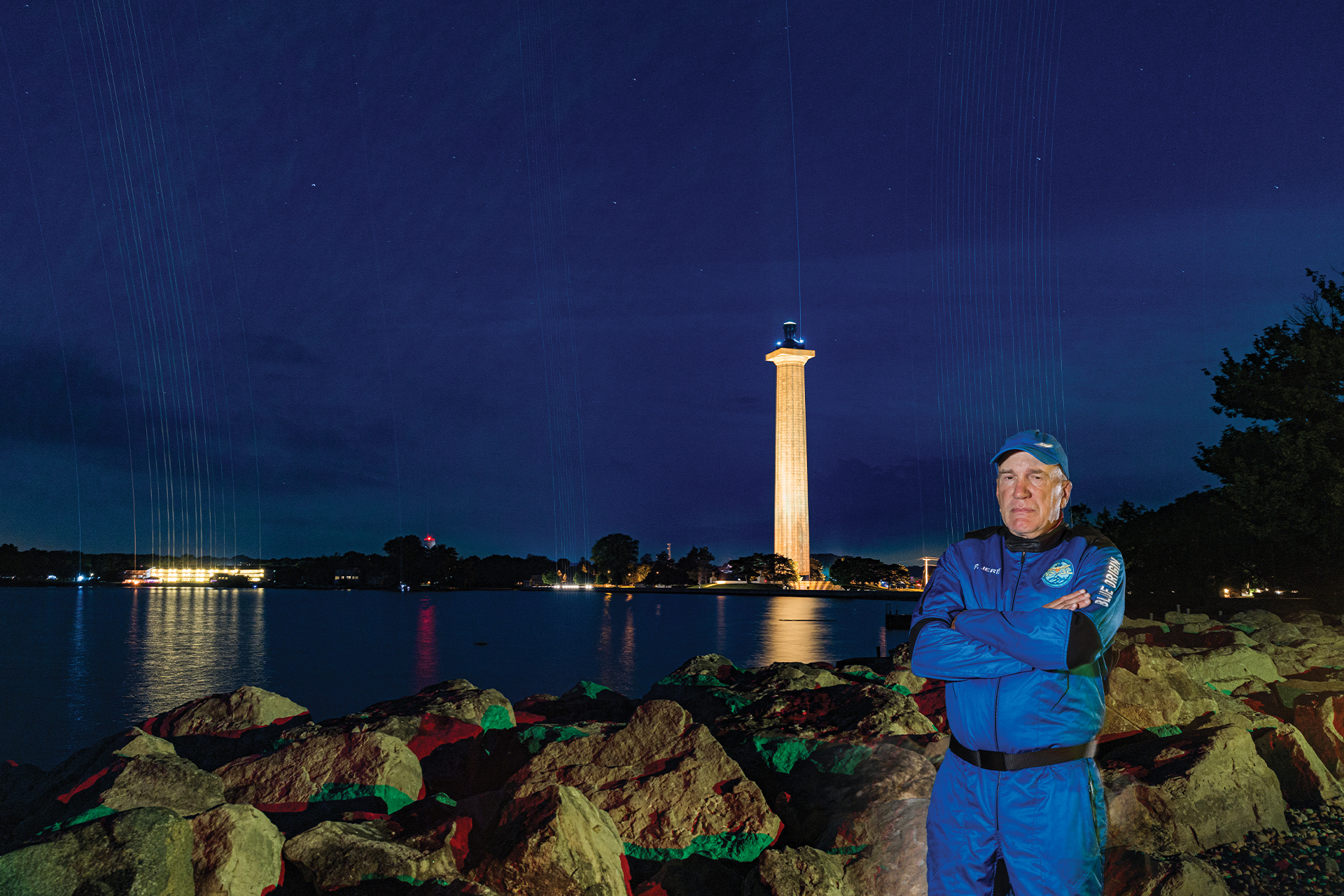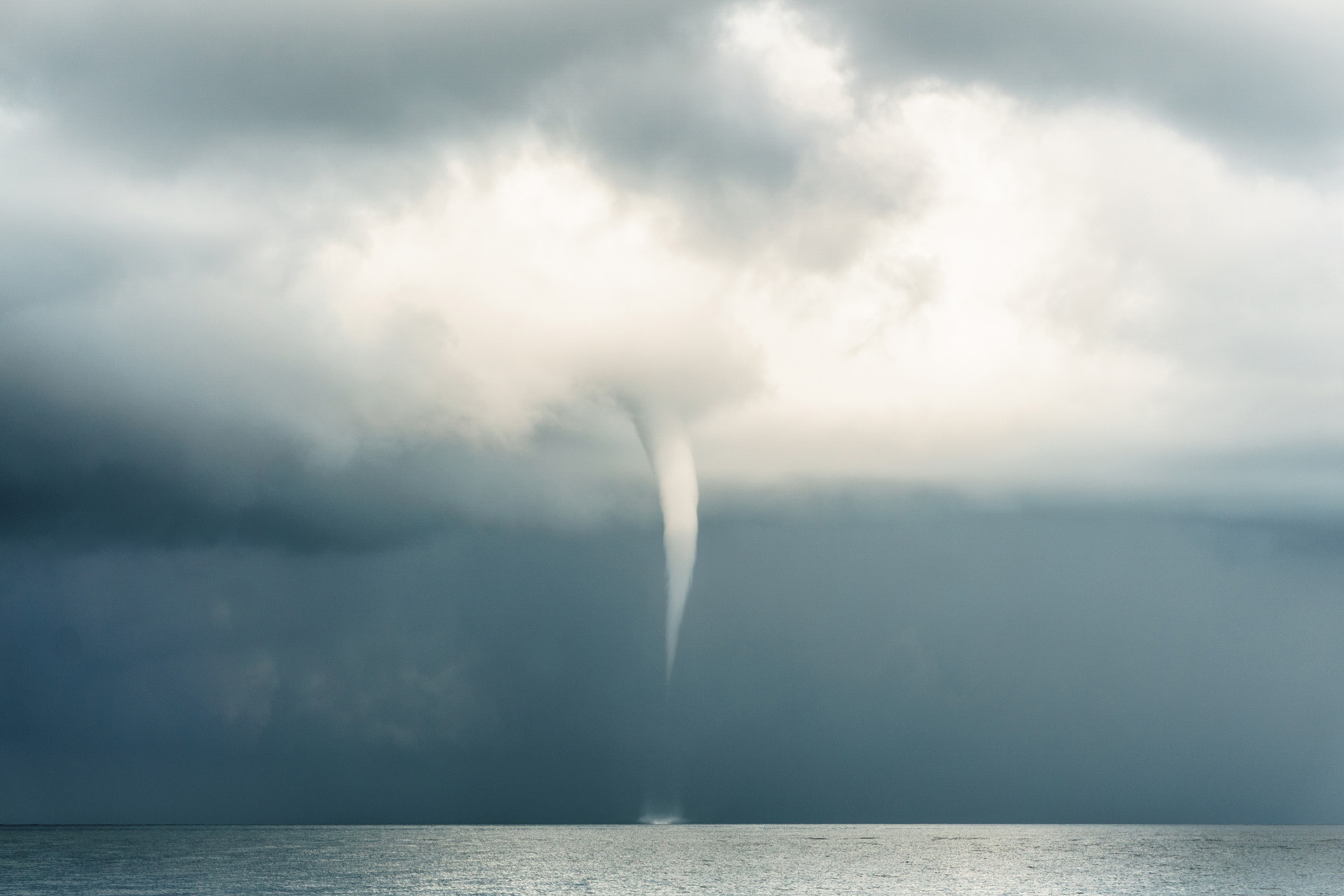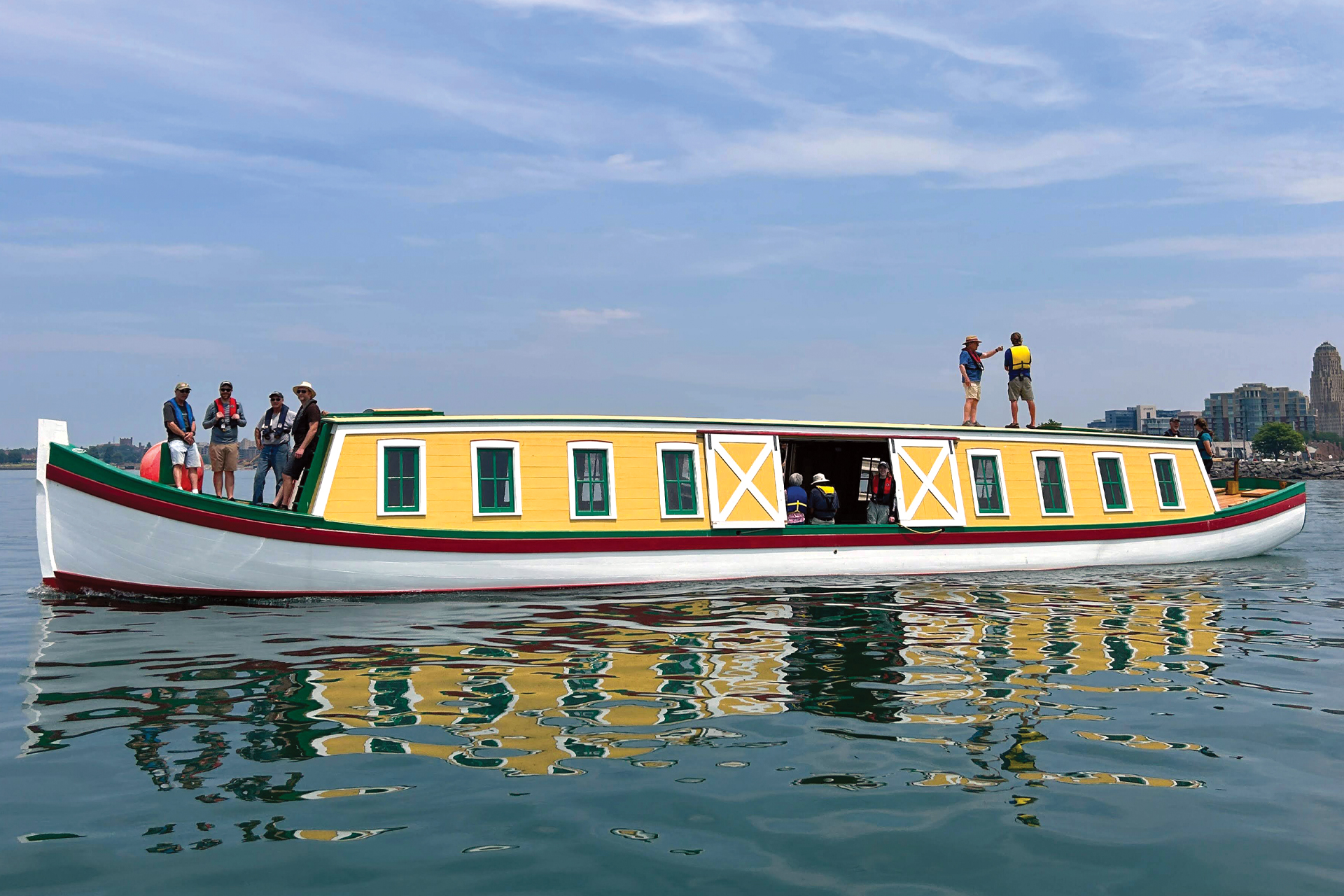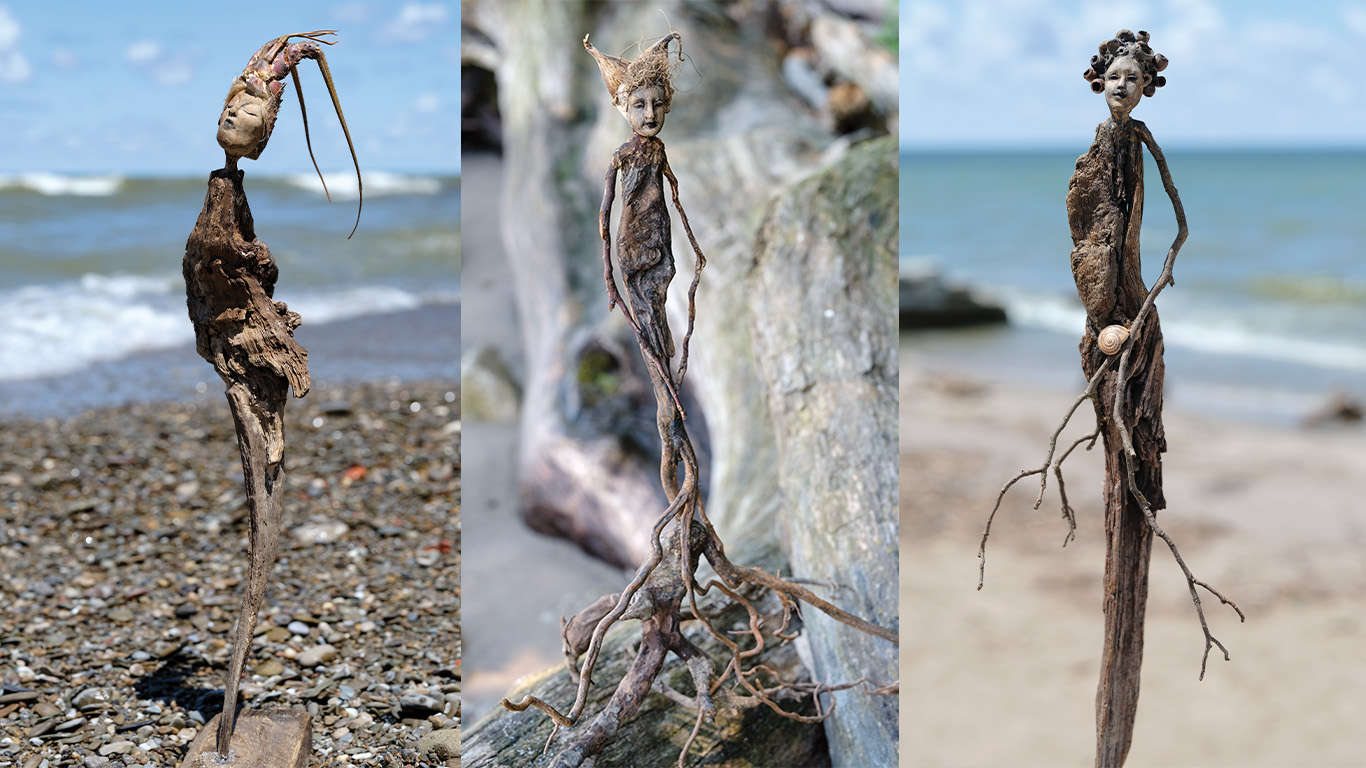Lake Erie Wind Turbines Take Blow
A new study casts doubts on the value — and future — of turbines in Lake Erie.
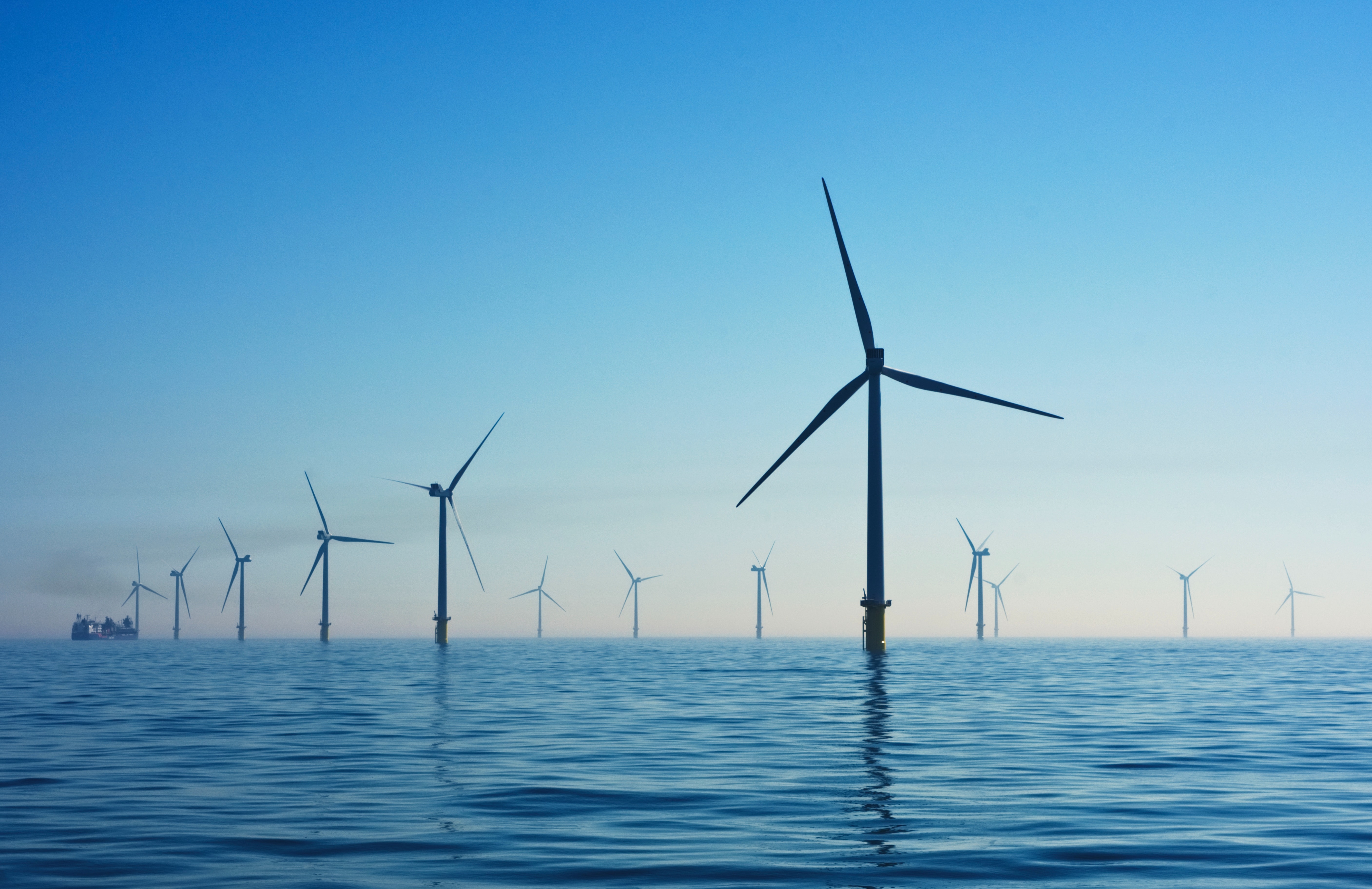
Has the idea of wind turbines in Lake Erie sunk?
Estimated at $173 million to develop and install, Icebreaker Wind is not dead in the water yet, although don’t expect to see the 479-feet-tall turbines anytime soon. Or hopefully not at all, if you ask some interested parties.
On the drawing board for over a decade, Icebreaker Wind is an offshore energy pilot program that proposes six wind turbines about eight to 10 miles off of downtown Cleveland in Lake Erie. If developed, it would be the first offshore wind energy project in the Great Lakes. A grid connection would be made via an underwater cable to a Cleveland Power substation.
But the project has never moved forward due to both lake of funding and legal challenges.
Project planners failed to raise the adequate financial support needed to continue in 2022, missing a grant stipulation deadline imposed by the U.S. Department of Energy. That was the second deadline extension asked for by the Lake Erie Energy Development Corp., which was established in 2009 to promote the project. Another extension request is in the hopper for 2023 — and there will most likely be more after that.
The Port of Cleveland, acting on behalf of the Lake Erie Energy Development Corp. in a managerial role, says they’re on it.
Jade Davis, the port’s vice president of external affairs, says Port staff are “talking with the DOE at least twice a month to plan out timelines to ensure that grant funding remains.” About $36 to $38 million of the DOE’s initial $50 million grant remains.
“We have every reason to believe the deadline extension will be favorably approved given the amount of work the DOE has done and the way the Biden administration has looked at renewable energy investments,” says Davis. “Icebreaker being ‘a bad project’ is not why we aren’t in the water yet.”
(The Biden administration has a goal of reaching 30 gigawatts of offshore wind capacity by 2030.)
“Regulatory and political hurdles that were put up for various reasons kept us from already running,” claims Davis. “The project is still viable and we believe will come to fruition. We are just taking a step back to ensure our case is as strong as ever.”
But some critics of Icebreaker Wind wonder just how many deadline extensions can be given, and if the answer is “indefinitely.” Also, serious questions remain about the economic and environmental effects of offshore wind power turbines in Lake Erie.
“We think the DOE needs to show successes at developing an offshore wind industry, which is part of their goals. We think the reason they are bending over backwards for Icebreaker is because it is just like any other government agency. It needs to show they are making progress,” says John Lipaj, board member of the non-profit Lake Erie Foundation, an environmental group with a mission to protect the lake. “We are not against wind energy. But if the goal is to decrease carbon emissions and decrease global warming, doesn’t it make sense to do it as cost effectively as possible?”
Using DOE data, Lipaj’s group calculates that only $35 million would be needed to build six on-land wind turbines in northwest Ohio, the state’s windiest region, as opposed to the $173 million to build Icebreaker Wind. That’s a price increase of 400 percent, he says.
“Lake Erie Foundation has an issue how taxpayers’ dollars would be spent so ineffectively,” says Lipaj, who also questions the justification for offshore turbines from those who say the wind blows stronger across the lake as opposed to land.
DOE wind charts for Ohio show that, while wind does blow stronger across the lake, it is only 10 percent stronger — not nearly enough to justify a 400 percent cost increase, according to Lipaj. He also questions the number of permanent jobs the project is predicted to create, believing it is much lower than touted.
Economics aside, the other main concern about Icebreaker Wind is environmental. This August the Ohio Supreme Court ruled that enough information had been obtained regarding the potential environmental impact on birds and bats flying over Lake Erie to give the project a green light. The national voice of the Sierra Club and The National Audubon Society also endorsed Icebreaker Wind.
However, other environmentalists say the “lightweight” environmental assessment which was undertaken for Icebreaker Wind was not enough. They want a full environmental impact study that studies the possible ramifications of offshore turbines on all life that depends on the lake. The Lake Erie Foundation also has endorsed a 2020 federal lawsuit filed by the American Bird Conservancy, Black Swamp Bird Observatory and Shores & Islands Ohio. The action charges the DOE took shortcuts in its environmental impact studies involving Icebreaker Wind.
In addition, the Great Lakes’ recreational opportunities, tourism dollars and commercial fisheries could also be affected by the turbines. A common concern is that Icebreaker Wind, a pilot wind farm, could lead to hundreds of turbines across the Great Lakes.
Indeed, there is already a proposal to build 50 industrial wind turbines in Lake Erie, stretching from Buffalo toward the Pennsylvania state line.
Its future took a serious hit recently when results were released from the Great Lakes Wind Feasibility Study, which was conducted by the New York State Energy Research and Development Authority to examine the “environmental, maritime, economic, and social issues” of the proposed turbines. The results are in the process of being evaluated.
The results read, in part, that "Great Lakes Wind currently does not offer a unique, critical, or cost-effective contribution toward the achievement of New York State’s Climate Act goals beyond what existing, more cost-competitive programs are currently expected to deliver..."
The study concluded that "now is not the right time to prioritize Great Lakes Wind projects in Lake Erie or Lake Ontario.”
Lipaj and others would like to see an independent organization oversee offshore wind turbines both in Ohio and in New York. He points to the Bureau of Ocean Energy Management as an example. It’s the the lead federal agency responsible for offshore exploration and development in the United States Freshwater, he says, deserves the same care and oversight as salt water.
For his part, Davis concedes that “it’s difficult balancing nature and protecting our lakefront with our economic development possibilities.”
But he maintains that it is possible.
“The Port,” he says, “is still very much involved with this project.”
Stay on top of everything Lake Erie has to offer — all year long — by subscribing to our free The Splash newsletter. It’s your guide to the best food, drinks, parks, beaches, shopping, festivals, music and more. Click here to subscribe.

